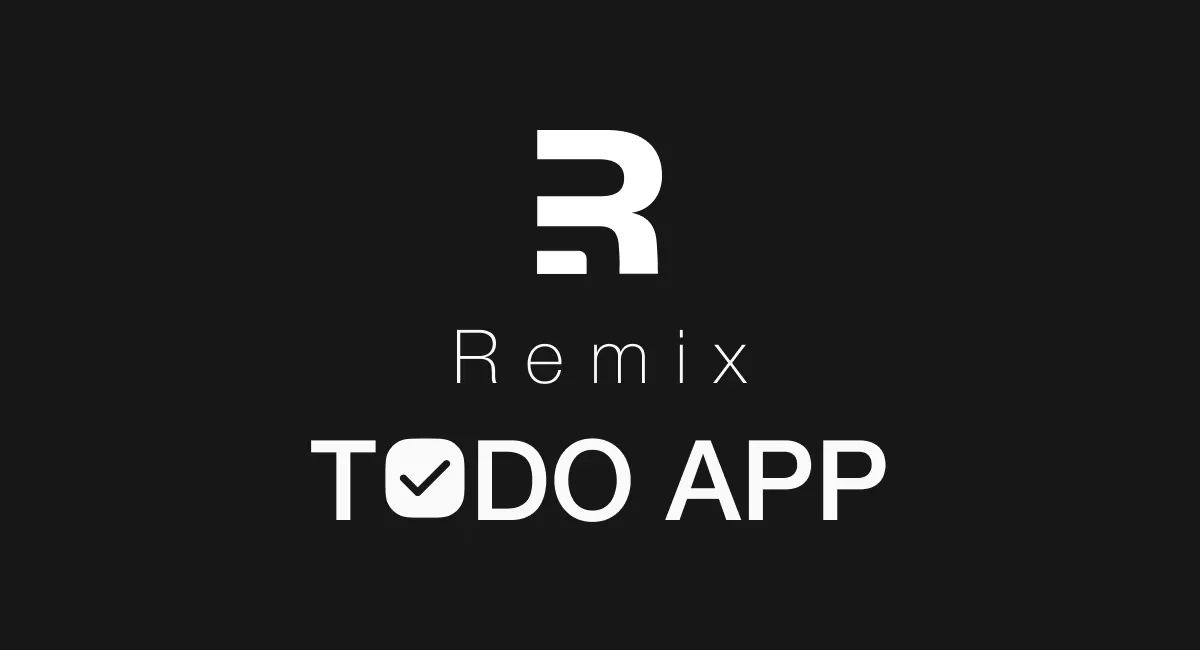
Introduction
Welcome to part 6 of the Remix Todo App series! This series covers everything you’ll use daily in Remix. In part 5, we added a theme switcher, allowing users to choose between light and dark themes or sync with their system’s preference.
In this part, we’ll deploy the app on Render. While it’s not fully production-ready (it lacks a real database, so tasks aren’t saved after closing), it’s “deployment-ready”. You can share it with family, friends, and colleagues as a beta version while they await the stable release with personalized and persistent tasks 😉. Let’s dive in!
Deploying a Remix App
Deploying a Remix app involves four layers:
- JavaScript runtime (e.g., Node.js)
- JavaScript web server (e.g., Express.js)
- Server adapter (e.g.,
@remix-run/express) - Web host or platform
Some web hosts manage multiple layers for you. To deploy Remix with Express.js, you need all four.
Since we initialized this project with create-remix without the --template
flag, we’re using the built-in “Remix App Server,” which combines layers 2 and 3. Our runtime is Node.js, and now we need a web host, so we’re using Render.
For more on what each layer does, see the Remix docs on deployment.
Deploying on Render
Before deploying, remove the artificial delay from the simulated database in
app/lib/db.server.ts:
import type { Item, Todo } from "~/types";
/** * List of todo items. */const items: Item[] = [];
/** * Simulates an artificial delay in async operations to mimic real-world API behaviour. * @returns {Promise<void>} A promise that resolves after the delay. */async function simulateDelay(): Promise<void> { const ARTIFICIAL_DELAY = 1000; await new Promise((resolve) => setTimeout(resolve, ARTIFICIAL_DELAY));}
/** * An implementation of the `Todo` interface that manages a collection of todo items. */export const todos: Todo = { async create(description: string) { await simulateDelay();
const createdTodo: Item = { id: Math.random().toString(16).slice(2), description, completed: false, createdAt: new Date(), };
items.push(createdTodo);
return createdTodo; },
async read() { await simulateDelay();
return items; },
async update(id: string, fields: Partial<Omit<Item, "id" | "createdAt">>) { await simulateDelay();
const itemIndex = items.findIndex((item) => item.id === id);
if (itemIndex === -1) { return undefined; }
const updatedTodo: Item = { ...items[itemIndex], ...fields, completedAt: fields.completed ? fields.completedAt : undefined, };
items[itemIndex] = updatedTodo;
return updatedTodo; },
async delete(id: string) { await simulateDelay();
const itemIndex = items.findIndex((item) => item.id === id);
if (itemIndex === -1) { return undefined; }
const [deletedTodo] = items.splice(itemIndex, 1);
return deletedTodo; },
async clearCompleted() { await simulateDelay();
for (let i = items.length - 1; i >= 0; i--) { if (items[i].completed) { items.splice(i, 1); } }
return items; },
async deleteAll() { await simulateDelay();
items.length = 0; return items; },};Next, follow these steps to deploy to Render:
-
Create a new GitHub repository for the project.
-
Push your local repository (if not initialized, run
git init):Terminal window git remote add origin <your-repository-url>git branch -M maingit push -u origin main -
Sign up on Render (preferably with GitHub).
-
Create a new Web Service on Render, grant access, and connect it to your repository.
-
During creation, use the following values:
Field Values Language NodeBranch mainBuild Command npm ci --production=false && npm run build && npm prune --productionStart Command npm start -
Select the “For hobby projects” as the Instance Type.
-
Scroll down and click “Deploy Web Service”.
That’s it! Once the build is complete, your Remix app will be live on your Render URL. No pun intended—you’ve just deployed the first JavaScript todo app in the world that works without JavaScript.
If you encounter issues, check the Render docs on deploying a Remix App.
Conclusion
In this part of the series, you learned how to deploy a Remix app to production on Render. To compare your implementation with mine, here’s the GitHub repository for the series: https://github.com/udohjeremiah/remix-todo-app. And here’s the deployed URL: https://remix-todo-app-jrhk.onrender.com.
In the next part, you’ll learn how to integrate a database and implement authentication in Remix, allowing users to have personalized and persistent tasks. Stay tuned!